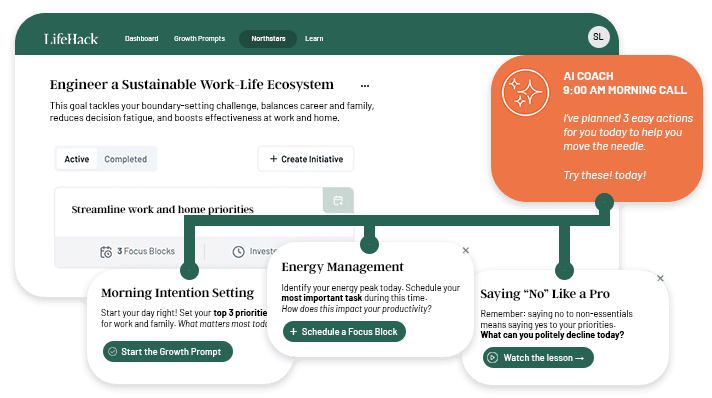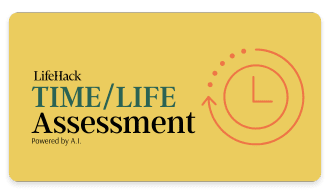Do you often feel stressed for most of your day? Maybe you always feel a burden that you just can’t get rid of? Focused meditation might be your answer.
In this article, I’ll explore what focused meditation is, how it differs in the pool of many styles of meditation, and how to implement and start this practice today. Likewise, I’ll highlight the benefits of a focused meditation practice for your overall health.
Table of Contents
What Is Focused Meditation?
Meditation is the practice of becoming self-aware through breath and attention to connect the mind, body, and spirit.[1] Meditation as a whole can change the structure and function of our brain. That being said, focused meditation or a guided meditation for focus is by far the best one. Meditation for focus and concentration can come in different forms. Experienced meditators use the following:
- Mindfulness – this meditation involves us to be focusing on your breath and observing thoughts. This allows us to focus on our feelings without becoming too absorbed in them.
- Concentrative – a meditation that gets us to focus on a particular point; be it a word, breath, object, or a point in the space you’re meditating. This is meant for us to pay attention to that point and prevent our minds from getting distracted.
- Moving – this meditation involves gets us to focus on slow and repetitive movements similar to yoga or tai chi. The goal is again to be focusing on your breath while relaxing your body and mind with the movements.
Focused meditation, also known as concentrative meditation, is the practice of meditating and bringing your attention to one single object. This object can be something practical and tangible, such as a mandala painting or a candle flame. It can also be something abstract, such as a phrase (also known as mantra) or a sound (such as Om).[2][3]
Whatever you settle your attention on becomes the focal point. None of these object examples are better than others—they are simply choices depending on what you’re looking to get out of your practice. For example, practitioners will choose candle gazing to interpret the images the flame makes in the shadows while others will choose a mantra because that particular phrase or word empowers or heals them.
How Does It Differ From Other Meditation Styles?
All meditation styles and practices overlap and build on each other. Their basic foundation is the same: to bring the practitioner insight and introspection.
There is no right or wrong way to meditate, however, the various types of meditation can enhance particular qualities. Based on your personality and needs, one type of meditation may be more useful to you than the other. The 9 types of meditation are:
- Mindfulness meditation
- Spiritual meditation
- Focused meditation
- Movement meditation
- Mantra meditation
- Transcendental meditation
- Progressive relaxation
- Loving kindness meditation
- Visualization meditation
Focused meditation, specifically, is the practice of focusing on one single object for the duration of the practice. How this differs from other meditation styles is that it gives the practitioner something tangible to do: focus. It’s almost like giving your mind an action to perform—listen to this sound, repeat these words, watch this flame, etc. This is also one of the reasons why this particular meditation style is great for beginners!
One of the biggest challenges in any meditation practice is that the mind gets carried away and we lose ourselves to random thoughts. This “obstacle” is actually a style of meditation in and of itself called Vipassana.[4] However, in focused meditation, we give the mind something to do so that it’s not simply left to its own devices. This type of meditation is beneficial for beginners and for practitioners who prefer some structure and guidance to their meditations.
The Benefits of Focused Meditation
In this style of meditation, what you’re really doing is exercising your mental muscles. Your brain is highly affected by dedicated and concentrated meditation practice.
Scientists have performed countless studies on focused meditation and have found that active meditators have more gray matter volume in their brain and, therefore, offsetting the cognitive decline that comes with aging. So, not only does practicing focused meditation help you learn how to focus better on certain tasks, but it also improves similar functions, such as memory. [5]
Unlock Your Time Potential: From Chaos to Control
Discover how to reclaim your time and transform chaos into productivity with our comprehensive Time/Life Assessment.
If you're ready to take control of your time and boost your efficiency, don't miss this opportunity to get a personalized analysis and action plan.

Likewise, it helps in reducing symptoms of depression and anxiety, which our society is currently crippled with.[6] By settling your attention on an object, you are essentially building your ability to observe your thoughts and sensations from a place of objectivity. This allows you to detach from negative self-talk that is often the breeding ground for depression and other mental illnesses.
From a guided meditation for focus to practicing it yourself, daily meditation for focus comes with several benefits:
- It’ll reduce stress
- Help you to control anxiety
- Enhance your self-awareness
- Improve attention span
- Helps you to focus on the present moment
- Increase your creativity and imagination
- And boost your patience and tolerance for things.
How to Practice Focused Meditation
Here are six tips to help you practice focused meditation. Based on your availability and interest, these tips may change and evolve. That’s the point: to create a structured practice that caters to your needs.
1. Find a Comfortable Seat
As with any meditation practice, comfort is truly key. The physical body responds to meditation practice by alerting you to whether it is comfortable and supported or stressed out and in pain. This is best observed in practitioners who tend to slouch and lose the tall, supported spine that is essential to meditation practice.
A simple rule in meditative sitting is to ensure that your hips are higher than your knees. Therefore, choosing to sit in a chair instead of on the floor may be a smart decision or perhaps propping yourself up on a cushion. For meditation techniques overall, it does not matter how you sit. All that matters is that you are supported and comfortable sitting for some time.
2. Choose Your Object of Focus
Every meditation training session is going to be different because no single day is the same for any one person. Therefore, experienced meditators know that choosing an object is more about listening to what you need at this time versus following any doctrine or “rule.”
If you’re not sure and have a hard time deciding, make focusing on your breath and pay attention to the inhale and exhale is a good option. Then, assign each inhale and exhale a number, and once you reach 10, start over. This is one of the simpler methods of keeping your mind occupied—by giving it a task. This also trains your mind, and over time and with practice, your mind will easily focus on an object without too much effort.
3. Set Your Desired Time or “Go With the Flow”
If you have a structured routine and would like to stick to your schedule, by all means, set a gentle timer for how long you’d like your meditation to be. This is also your opportunity to throw out the notion that any meditation has to be a certain length of time to be correct—it does not.
Likewise, if you have the time, you can also listen to your body and come out of your meditation when you feel it’s right to do so. This is often a beautiful practice of listening and tuning in.
4. Relax Your Body as You Focus on Your Meditation
Typically, when we are focusing on something, we tend to tighten our body. Observe this next time that you’re concentrating on something: your jaw will tighten and your shoulders will squeeze up towards your ears.
As you sink into your meditation, keep this in mind and check in with your body every once in a while. Let your shoulders sink down your back and release any tension through your jaw and face. Lastly, relax your brow and let your eyes be heavy in their sockets. Then, return to your object of meditation. Observe if your meditation changes at all by relaxing your physical body.
5. Return to Your Breath and Object When You Get Distracted
Notice that I didn’t say “if you get distracted.” That’s because you definitely will drift off with random thoughts or get pulled away from your object of focus. In meditation, distractions are almost guaranteed. Therefore, it’s your opportunity to practice detaching yourself from feeling guilty or inadequate to continue.
Over time and with practice, you will find it easier to stay with your object of focus. In the meantime, however, notice when you get distracted. Pause and take a big breath in and out. Check in with your physical body and relax. Once you’re ready again, return to your object of focus. Meditation is simply one long cycle of wandering and coming back to yourself.
6. Journal Your Experiences
When your meditation practice has ended, another powerful practice is to jot down any experiences that you felt. There may have been insights and “downloads” that you acquired during your session that you may want to record.
Likewise, you could write about any challenges that you faced. These are great lessons that will continue to show up for you, and it’s nice to keep a journal of them to see how they evolve and progress over time (and they will). Lastly, you can write about what works and what doesn’t, as far as picking your objects of meditation go. This way, you can learn what you most associate with and feel comfortable with.
While these steps are simple, it’s easier said than done. Whether you’re starting out with a guided meditation for focus, loving kindness meditation, or transcendental meditation, anticipating failure the first time you try these things is healthy. Furthermore, congratulate yourself for even making slight progress like noticing and returning to the present moment and noticing the sensations you experienced.
Final Thoughts
If practicing meditation causes you to feel distracted and unsupported, give focused meditation a go! With the help of an object to bring your attention to, it structures your meditation time and offers guidance and support.
Dedicating yourself to this style of meditation will help increase your memory, reduce stress and anxiety, and promote better cognitive function. Even though any style of meditation is a powerful way of taking care of your mental health, focused meditation gives your mind a tangible task with which to grow and strengthen.
More About Focused Meditation
- 15 Ways Meditation Benefits Your Brain Power and Your Mood
- Meditation for Beginners: How to Meditate Deeply and Quickly
Featured photo credit: Lua Valentia via unsplash.com
Ready for a Goal Breakthrough? Unlock Your Personalized Strategy

Experience the power of a strategy tailored just for you.
Our personalized system provides:
- Custom-crafted action steps based on your unique situation
- Insights tailored to your specific challenges and strengths
- A personalized roadmap to turn your goals into reality
Tailored recommendations powered by smart analysis
Reference
| [1] | ^ | VeryWellMind: What is Meditation? |
| [2] | ^ | Yoga Journal: The Science Behind Finding Your Mantra and How to Practice It Daily |
| [3] | ^ | mindbodygreen: OM: What Is It & Why Do We Chant It? |
| [4] | ^ | Lion’s Roar: What Is Vipassana Meditation and How Do You Practice It? |
| [5] | ^ | Mindworks: How does Meditation Improve Memory and Focus? |
| [6] | ^ | Forbes: 7 Ways Meditation Can Actually Change the Brain |















































